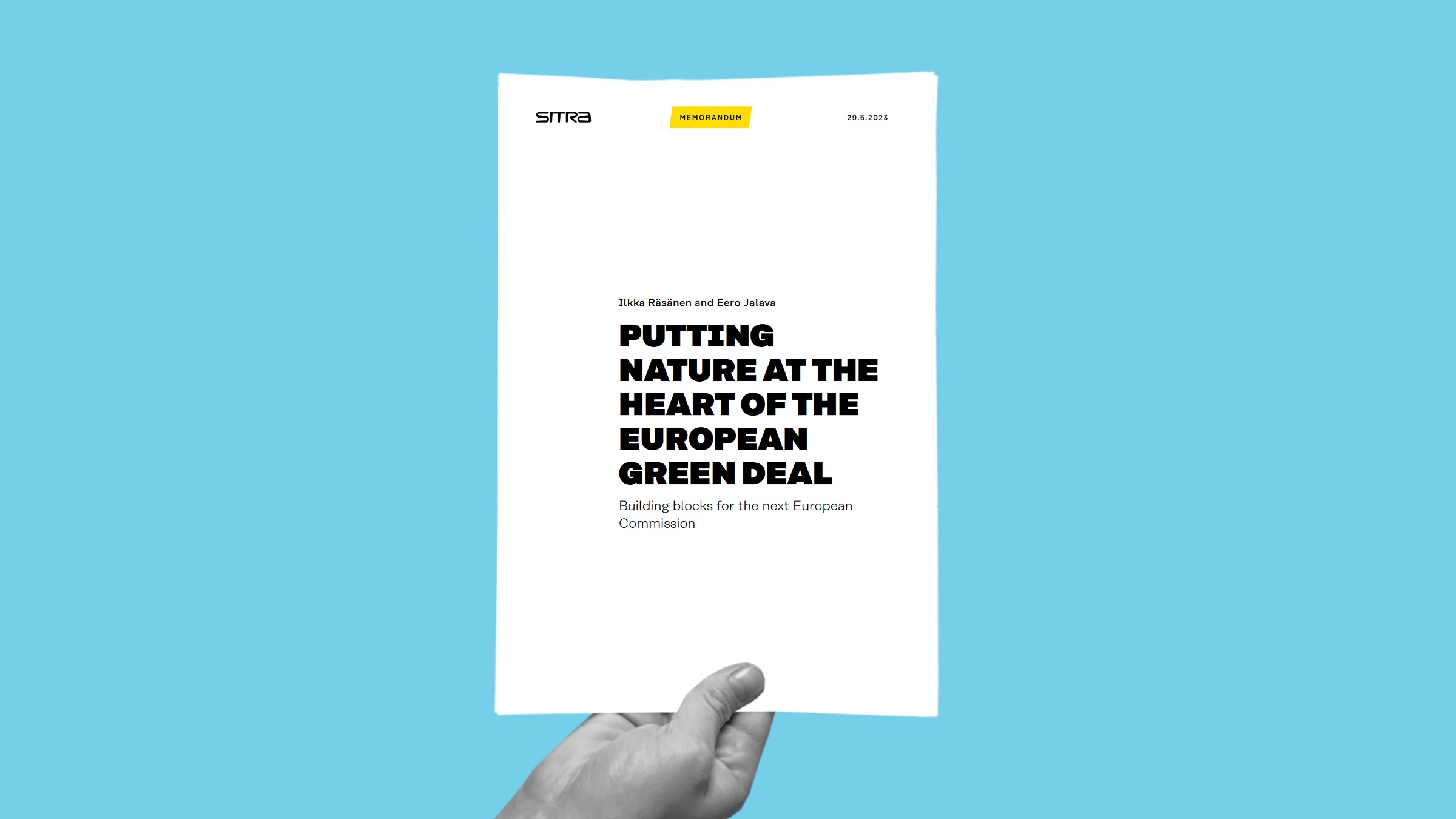Since its launch in 2019, the European Green Deal has been a true flagship strategy of the von der Leyen Commission. It can already be said that such a strategy was necessary to accelerate Europe’s green transition amid a worsening ecological crisis. It was also vital for breaking away from the supply of Russian fossil energy to Europe following Russia’s attack on Ukraine.
A new European Commission will take office in late 2024. Now is the right time to begin a debate on how the European Green Deal should be continued. It is paramount that it continues, as the loss of biodiversity and the climate crisis continue with far-reaching consequences becoming more visible and tangible every year. At the same time, it has to evolve to take an even more integrated approach to solving the ecological crisis, while maintaining Europe’s competitiveness and strengthening its resilience.
Human activity is exceeding the carrying capacity of nature and thereby threatening the very foundation of our economy and well-being. Nature, both biological and abiotic, is a whole. Therefore, we urgently need integrated responses to different facets of the ecological crisis. This can be done by putting nature at the core of the decision-making of EU institutions, governments, local authorities, business and consumers. Our economies and well-being depend on nature, yet we have let our natural capital degrade and depreciate, because we have ignored it in our decisions. The value of nature and the ecosystem services it provides need to be made visible, internalised in economic decision-making and mainstreamed into core EU policies. This will ensure both sustainability and resilience of our economies and result in a new wave of investments and job creation.
This memorandum has two goals. First, it offers some “building blocks” upon which to design the next version of the European Green Deal, which we call “European Green Deal 2.0”. These building blocks mainly address the very established core areas of the EU, namely the single market and the common agricultural policy, from the point of view of reducing the pressures on nature while creating new market opportunities and innovation for restorative and regenerative solutions. We discuss ecosystem accounting and biodiversity offsets as enablers and tools for making nature’s value a visible part of decision-making, mainstreaming circularity into the single market, viewing nature as a business opportunity, using data and digital product passports as enablers of a green transition, tackling Europe’s global biodiversity footprint and reforming the common agricultural policy.
We also present a number of policy recommendations. The list is far from complete, and we encourage all stakeholders to share their suggestions. Our second goal is thus to trigger an early debate on how the next European Green Deal 2.0 should look. Nobody has all the answers, but it is important that various ideas are subjected to a public discussion. This paper also includes some questions that need further analysis with a view to formulating the European Green Deal 2.0.
Key policy recommendations
- The EU and its member states should make sure that the value of nature and ecosystem services is taken into account in economic decision-making and that damage to nature has a price.
- The EU should increase its ambitions for ecosystem accounting through the inclusion of monetary accounts in the European ecosystem accounting.
- The EU, its member states and their local authorities should ensure there is no net loss of ecosystems or ecosystem services through biodiversity offsets.
- The EU should establish a genuinely circular single market by introducing circular design principles and recycled content requirements for a broad range of products.
- Minimum mandatory targets for Green Public Procurement (GPP) should be introduced to create and stimulate demand for circular materials, products and services. Principles governing the green coding of software should also be introduced into green public procurement criteria.
- The EU and its member states should assess a broad range of policy measures to reduce European consumption of those key commodities which cause the greatest biodiversity impact.
- The next reform of the EU’s common agricultural policy (CAP) should set a direction for gradually moving away from area-based and animal-based support payments towards results-based payments, which reward the strengthening and maintenance of ecosystem services.



















Recommended
Have some more.